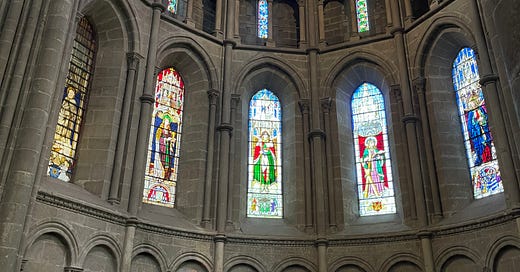Does your church have socio-economic diversity? And have you ever paused to wrestle with why or why not?
I’m in a New Testament History class in seminary this semester and one of the historical markers of the Early Church that consistently stands out is the Early Church’s reputation for being radically socio-economically diverse & inclusive - something that flew in the face of a highly socio-economically segregated 1st & 2nd century Greco-Roman society.
One example of this is something that most of us don’t normally think of - until we lose a loved one: burial plots.
In the 1st & 2nd century AD (much like in many contexts today), the only people who could afford burial plots were the rich. People who were poor stood zero chance of receiving a burial.
So how did the Early Church respond? They offered free burial services (and plots!) to people who were poor. And they buried people who were poor right alongside people who were rich - something completely unheard of in that time!
I was recently talking to a Canadian Pastor friend who pastors a historic Quaker church along the US-Canadian border. This church helped rescue many families from the Transatlantic Slave Trade via the Underground Railroad. Many of these freed black men & women went on to join this church community and were buried at this church’s cemetery - right alongside white folks - both poor and wealthy. This was also a significant form of resistance to the socio-economic norms of their society & culture.
But the Early Church was also incredibly socio-economically diverse in its makeup. Rich people and poor people sat together, ate together and worshipped together - something unheard of outside the walls of the Early Church.
The closest thing I have ever experienced to this is the house church in India that I was raised in. This church was made up of wealthy folks (including often those whose homes we met in), blue collar labourers, slum-dwellers and everyone in between.
But let me tell you - being in a church community like that was deeply uncomfortable - for everyone. It meant sitting, worshiping and eating side-by-side with folks that the outside world usually wouldn’t allow you to associate with as equals. And it took a ton of hard work to keep the outside world’s classism out of our church community. But we did this anyway because of our belief that in Christ, there is neither Jew nor Gentile, neither slave nor free, nor is there male and female (Galatians 3:28).
One primary reason why our churches in North America are not as socio-economically diverse as the Early Church and the Majority World Church is because of a widespread US church planting / church growth strategy called the Homogeneous Unit Principle (HUP).
The premise of HUP is simple: The fastest way to grow a church is by micro-targeting it towards a specific socio-economic group. Ex: Suburban churches that only cater to affluent, white upper middle class suburban folks.
HUP was actively taught at several US evangelical Bible colleges & seminaries as a church planting and church growth strategy in the late 20th century. As someone who has helped plant two churches in the US - I can tell you for a fact that HUP (intentional socio-economic segregation) is alive and well in the US Church today - just as it is in the Canadian Church.
HUP churches and socio-economically segregated churches fly in the face of the Early Church, the Majority World Church and Jesus’ vision for his Church.
It prioritizes success in numeric growth over authentic spiritual growth. And it rewards socio-economically segregated success over faithfulness via diversity, equity & inclusion.
This is why many Majority World Church leaders such as René Padilla vehemently opposed the teaching of HUP.
I think if 1st & 2nd century church leaders were alive today, they would voice concern with US evangelical church leaders. And if the Apostle Paul were alive today, the US & Canadian Church would absolutely be getting a letter on this.
If you’re a US or Canadian church leader reading this, here’s one way to discern whether or not your church is socio-economically segregated:
Is your church easily accessible to those without a car who rely on public transportation?
As a new immigrant to the United States - I could only attend churches accessible via public transit for my first few years as an immigrant. And being at a church accessible to public transit also allowed the wealthier people at the church with a car to have a sense of heightened awareness about those who could not afford cars that they worshiped with. Case in point - I made many generous friends who would regularly go out of their way to offer me rides back home.
Now of course, this question does not apply as much to churches in rural areas without good public transit infrastructure but that makes it all the more important for these church leaders to be making their church communities accessible and inclusive to those of different socio-economic backgrounds.
Let us resist the socio-economic norms imposed by 21st century North American society today by presenting the world with an alternative vision for a new society - one so ridiculously socio-economically diverse and one so radically inclusive that we visibly embody the world to come.





Good thoughts here. Our church here in Indonesia is socio-economically diverse and although there is no burial issue, we hold annual “mass weddings” so that the poor can afford to marry.
In America for my first year of life in Dallas I couldn’t get involved in my church because I could only go on Sunday when I was with my husband. During the week he drove our car to seminary and I took public transportation, and as you say, it was really hard to get to.
Thanks for calling out the homogeneous unit strategy for growth of congregations. (I can’t call them churches)